Regearing any vehicle is a major undertaking. For older trucks, it’s also an act of faith. Call it a motorhead’s version of sustainable consumerism. And for many of us, it also reflects our love of a venerable rig that we hope to drive for years to come, and perhaps pass on to a son, daughter or grandchild.
Not a project to be repeated on a truck, regearing is a change to be made after careful thought and informed by plans for the vehicle’s future, both in terms of upcoming modifications and likely uses. For Toyota 4x4s, whose reputation is built on their longevity, replacing differential gears is also synonymous with R&R of the drivetrain. As a result, while a shiny set of ring and pinion gears look simple, associated with their installation is a whole series of Toyota-engineered components that must (or should be) replaced while swapping the gears.
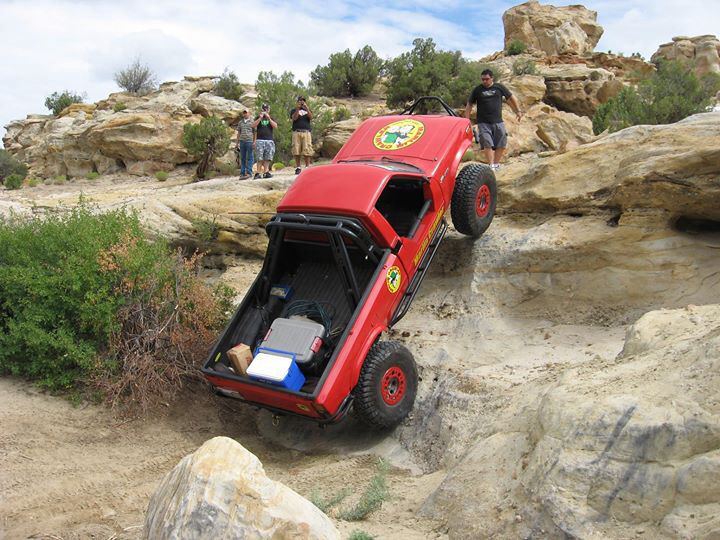
To properly tackle this do-it-once-do-it-right regearing project in our long-lived 80 Series Land Cruiser, we turned to the Toyota masters at Marlin Crawler in Fresno, Calif. Founded by rock crawling pioneer and mini truck icon Marlin Czajkowski, Marlin Crawler serves the Toyota crowd with a nearly 40-year tradition of providing parts that extract the maximum performance and lifespan from these trucks. How serious are they? Marlin’s venerable 1980 HiLux is equipped with a final crawl ratio 1,148:1!
For his pioneering efforts in low range gearing, Marlin has been called the father of modern rock crawling. In addition to 22RE-powered mini’s, Marlin Crawler offers parts for Land Cruiser, Tacoma and other Toyota 4×4 drivelines. Their low range gears, custom transfer cases and stacked transfer case options will allow you to walk beside your idling truck. Ultimately, t-case changes only assist on the trail, and even then only when having shifted into low range.
As a result, our goal was to address the truck’s primary gears – the ring and pinion (aka R&P) gears hidden within the differentials – used to turn the 80’s increasingly large tires. Although 35” tires easily fit into the Cruiser’s generous wheel wells, doing so saps the stock drivetrain of its already modest power. Our goal? Return the truck’s gearing to stock or better ratios to perk up acceleration, retaining reasonable highway rpm’s, but doing so with optimal diameter 37” tires.
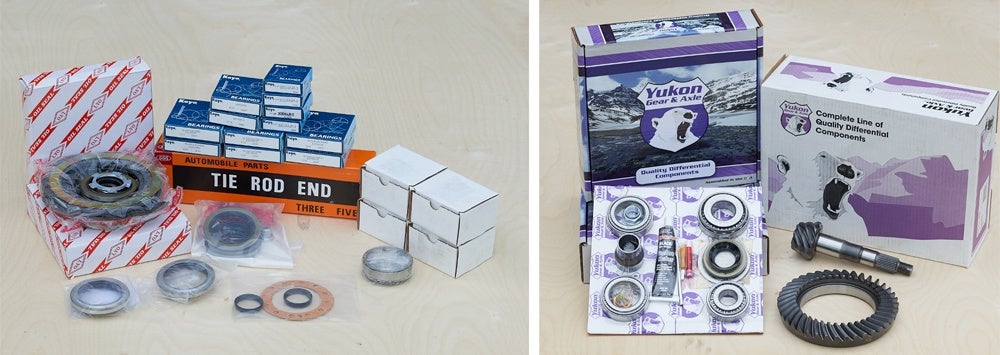
Table of contents
Better Than New: Suppliers & Parts
The list of parts for the regearing project and axle overhaul is a testament to Toyota engineering. It’s also a bit daunting. To develop a comprehensive list of parts we worked with Marlin’s son, Michael “Big Mike” Czajkowski, who serves as President and heir apparent to the Crawler dynasty. Big Mike helped us work through all the needed components, including partnering with two driveline legends: RANDYS Worldwide (formerly Randy’s Ring & Pinion) of Everett, Wash., and premiere extreme axle manufacturer, RCV Performance of Rockford, Ill.
A soup-to-nuts, do-it-right regear/axle rebuild replaces all the smaller yet critical components as well. Principally composed of seals and bearings, rebuild kits simplify shopping, bundling everything into a ready-made, model specific package. Marlin makes this process simple with their Knuckle Service Kit and Builder/Setup Kits. Offering a variety of options, these all-in-one packages will give both a DIY’er or a professional installer the necessary items.
For the new gears, we worked with the largest aftermarket distributor of light duty differential parts for trucks and SUV’s in the U.S: RANDYS. Because RANDYS engineers and manufactures Yukon gears, we worked with them to select the right ratio for our needs. The 80 Series came equipped with 4.10 gears, a reasonably effective configuration when shod with the original 275/70R16 (31”) tires. After much hand-wringing, forum reading and tech staff assistance, we settled on 4.88’s. Their 16% lower ratio represented a versatile choice, permitting tires from 35-37”, without sending rpm skyward at interstate speeds.
[Note: since this installation, Marlin Crawler has developed the Ninja Gears, its own line of R&P gears for most Toyota 4×4 applications.]
Regearing is, of course, never just replacing gears. Worn components of all sorts need to go, and that includes the heart of the system: axle shafts. Hidden within the Land Cruiser’s bombproof axle housings are the real heroes of its driveline, the splined axle sets and their CV joints. The unquestioned leader in Toyota axles is RCV Performance. RCV has been refining axle designs for 70 years, and has its roots in parent company Aircraft Gear Corp. The brand’s aerospace engineering capabilities have allowed them to flourish as suppliers of desert racing, rock crawling and 700+hp Ultra4 Series trucks.
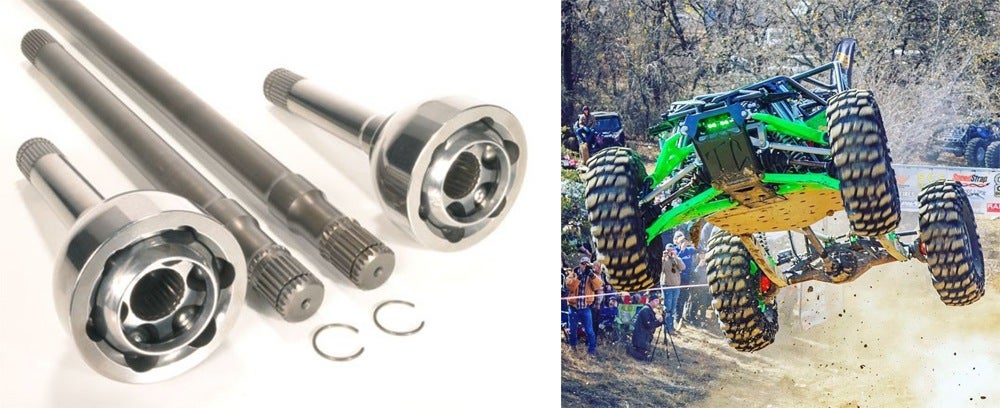
Unfortunately, our original front axle shafts had, after 150,000 miles, begun emitting the classic “click-click-click” sound that tells you they’re ready to be retired. To solve this, our Collector’s Edition Cruiser required a new set of front axle shafts and CV joints. The undisputed leader in aftermarket Toyota axles for off-road applications is RCV Performance Products of Rockford, Ill. In fact, RCV is renowned for its axle sets to upfit applications from UTVs to competition 4x4s.
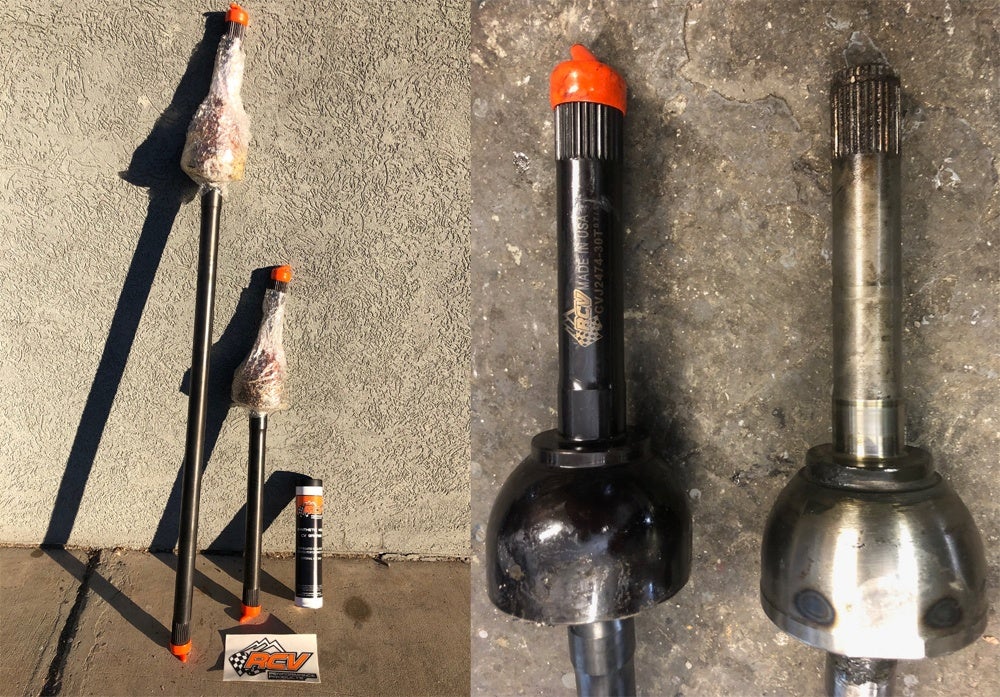
RCV produces three levels of replacement axle sets for the 80 Series Cruiser alone (’91-’97). Their Good/Better/Best selection of front axles surpass OEM specifications in their materials and shaft interfaces. While each model dramatically enhances shaft strength through high-strength chromoly construction, the top tier set uses 300M for the inner shafts to markedly improve resistance to shock loads. For regularly wheeling a 6,000-pound Cruiser on the Rubicon, Johnson Valley and such, that model may fit the bill. In our case, the 30 Spline Upgrade offered the best benefits, enhancing the outer OEM 24-spline count by 25%, and providing a greatly enhanced margin of strength.
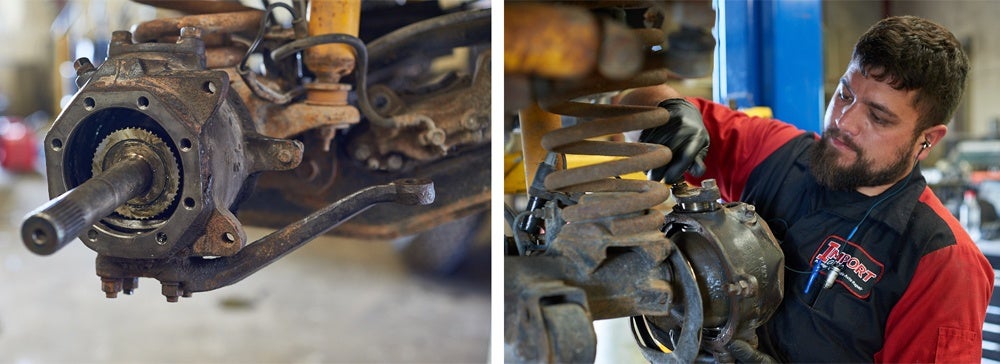
Grease & Gears: The Install
Regearing is also not your typical 2-banana DIY project. Described by some as a lengthy grease fest, it is, if nothing else, a job requiring thoroughness and care, and a good dose of knowledge. As a result, we took the project to the most experienced Land Cruiser shop in Utah: State Automotive near Salt Lake City. Operating since 1969, Dustin and the team at State Automotive are self-avowed “Land Cruiser specialists,” and the smorgasbord of Series 4x4s in their parking lot testifies to how many owners trust them with their prized Toyotas.
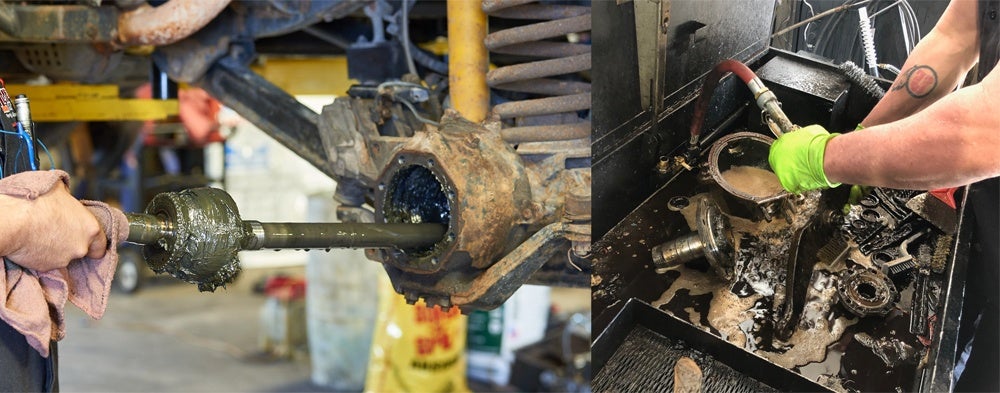
Like many 4x4s, the Land Cruiser can present a challenge in sourcing parts in the middle of an install. The guru of all things Land Cruiser related, Utah’s own Kurt Williams and Cruiser Outfitters, helped us fill in the gaps in needed parts. Frankly, if it’s a Cruiser part, Kurt has it in its supremely organized new location, or can have it shortly. Since 2001, its shop has been a wealth of one-stop solutions for owners of Series rigs from iconic 40s to today’s posh 200 Series.
As sure as Toyota engineering is uber reliable and well thought out, it’s also a design that means you can’t skimp on the process to rebuild. A full tear down of the beefy 80 Series solid axles is involved, greasy mess, and needs to be planned for. This underscores the value of finding a reputable shop for both the ring and pinion set up, as well as the rest of the axles. Word to the wise: learn what the experience level is of any shop you are considering for your particular make and model, and especially whether gear set up is done in house or sent out to a shop that does them routinely.
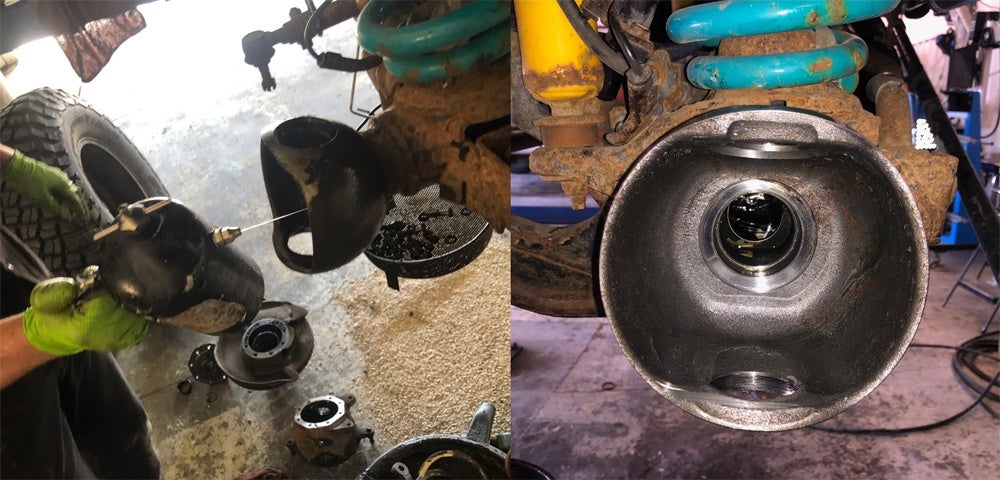
Whether you have a shop do the work or are considering it yourself, Marlin Crawler offers a terrific array of information. That includes their New Gear Break-In Procedure page, which can be supplemented with the Toyota Axle Re-Gear/Rebuild Information & Tech page from Cruiser Outfitters.
When it’s time for regearing, it’s also time to R&R a series of associated driveline components. On the other hand, the need for that routine maintenance (or leaking seals like we had) can be a reason to go all the way and regear. While you’re in there, you might as well change the ring and pinion, right? On the other hand, the temptation to contemplate a regear based only on the cost of a set of ring and pinion gears – $500 for the full set – is an easy way to get surprised by the associated costs. Doing the job right means a surprising array of smaller but essential components and installation steps.
Fortunately, the Marlin Crawler setup kits take the mystery out of what’s needed. Its kits feature KOYO and/or Timken bearings, along with Marlin’s matched axle service parts, tools, axle hardware, and, as needed, axle shafts. These kits cost about the same as the gears they enable, assuming one’s Birfields are OK to reuse.
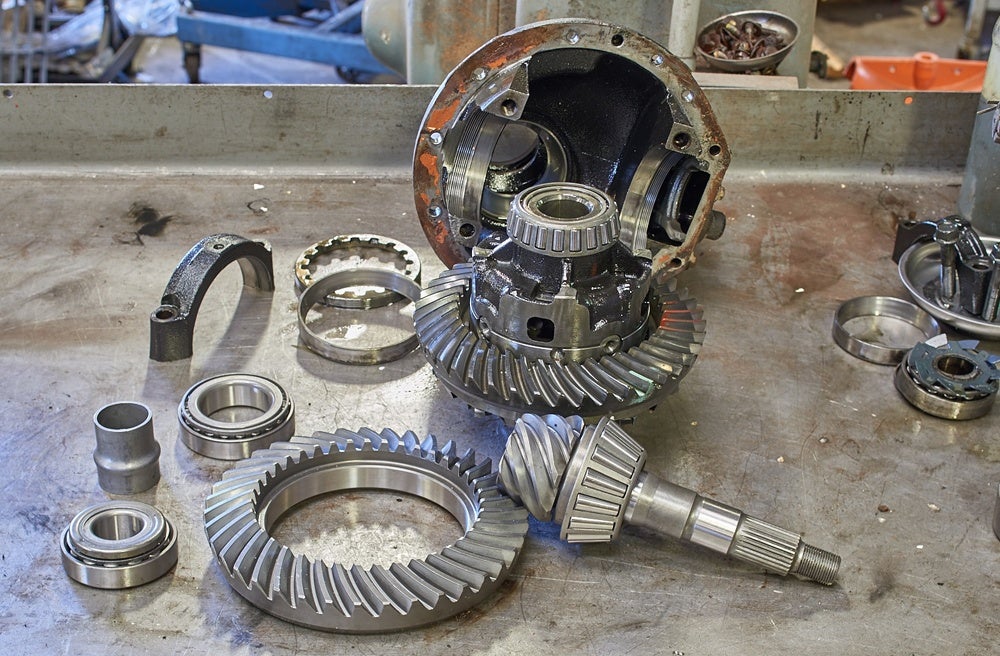
Installation and setup for our gears was done by a local shop specializing in Toyota and other imports. The experience ultimately was more expensive than necessary, due to what we ultimately learned was the shop’s lack of experience with Land Cruisers. This painful experience underscored the benefit of having proven Toyota experts like Nick, lead Cruiser technician at State Automotive, handle all aspects of an install, even if it means a bit of extra travel.
The install also revealed a number of other needs (e.g., worn steering linkage and drag link/tie rod ends). On a trail rig with 150,000+ miles, these additional parts are understandable, but can quickly add to your project’s ancillary costs. Likewise, it’s foreseeable that an alignment may subsequently be required.
Budgeting for $1,500-$2,000 in parts, along with a grand or more in labor, is wise when it comes to regearing. Painful as that sounds, the result will be a drivetrain that is ready for another decade (or more) of hard use. Which is reason enough to bite the bullet should you plan on your Toyota being a companion well into the future. But is it worth it for the performance changes?
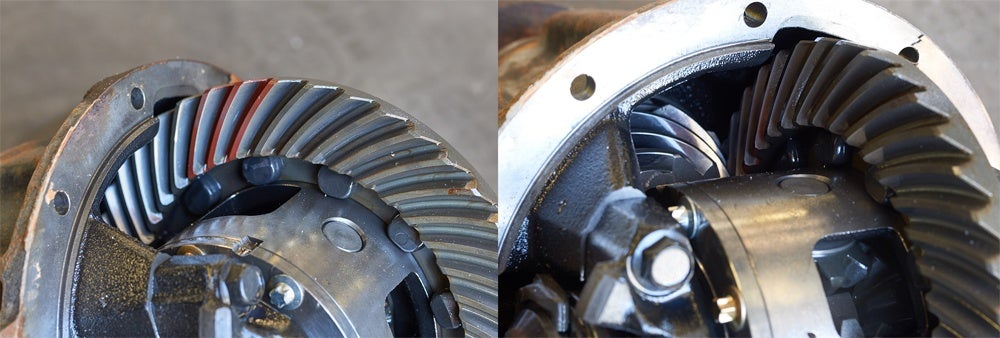
Breaking Them In
Any owner who’s undertaken such a major upgrade is sorely tempted to roll out of the shop and immediately want to test the new gears. DON’T DO IT!
Treated properly, new gears will last as long as your vehicle itself. However, there is no better way to waste the thousands of dollars you’ve spent on regearing than ignoring proper break-in procedures. RANDYS provides very explicit directions for the initial miles on their gear sets. At their core, those steps prevent overheating or “burning” of the new, unhardened gears. Termed “burned gear syndrome,” this costly mistake results from driving the new gears for more than 10 minutes at a time during the first 500 miles, and/or heavily loading the gears with hard accelerations or hard downshifting.
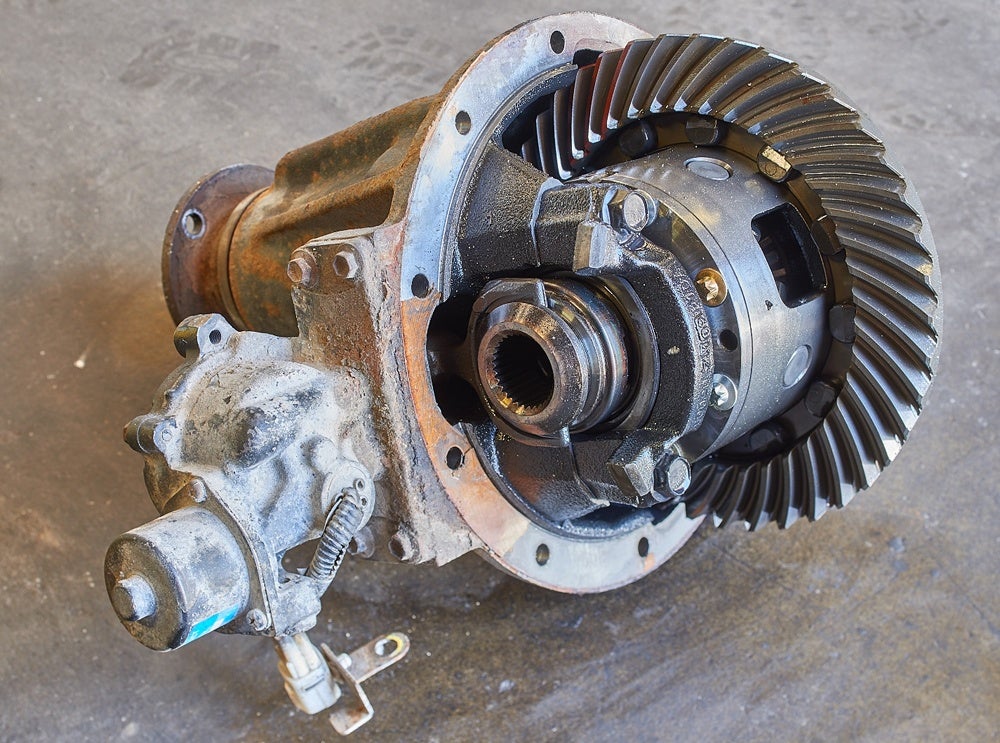
At the factory, gears are “lapped”, an initial hardening process to prepare gears for the loads they will face. However, the subsequent “work hardening” that occurs during those initial miles is what sets the gears into one another, and creates the durable surface characteristics that will make their metal endure hundreds of thousands of miles of revolutions. Ironically, if one doesn’t heed these procedures and overheats the gear oil it can change molecular structure and actually soften rather than harden the gear’s surfaces, resulting in gear set failure.
Faced with such catastrophic consequences, and armed with the guidelines from RANDYS, we carefully followed their outlined steps and recommendations. With 35+ years of experience, it’s tough to argue with the hard-earned experience they have gained. RANDYS guidance is as follows:
- Use synthetic gear oil
- After driving the first 15 to 20 miles, stop and let the differential cool before proceeding.
- Keep the vehicle at speeds below 60 mph for the first 100 miles.
- Put at least 500 miles on the new gear set before heavy use or towing.
- During the first 45 miles of towing, go about 15 miles at a time before stopping to let the differential cool for 15 minutes before continuing. [Note: This is necessary because not all of the gear tooth is making contact until it is heavily loaded. When towing, the teeth flex to contact completely, and cause the previously unloaded portion of the teeth to touch and work harden]
- Change the gear oil after the first 500 miles in order to remove any metal particles or phosphorus coating that has come from the new gear set.
Is it hard to remain patient for 500 miles after regearing? Sure. But anyone who owns a Land Cruiser values them for their incredible durability and longevity, and knows that proper procedures are essential if you want a truck that will go a half million miles. Having regeared my previous project truck twice, (4.77 and then 5.29) I can assure you I was not about to do that again. This was a one-off upgrade, and I was committed to doing it right.
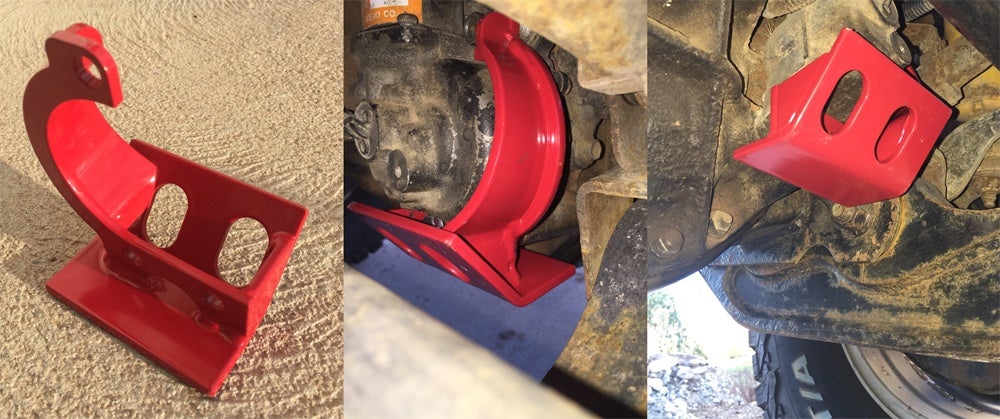
While upgrading the truck’s driveline, we also looked to safeguard sensitive parts. Marlin Crawler offers protection of the sensitive but exposed E-locker motor on the Cruiser’s front axle with their bolt-on Electric Locker Motor Guard. This MadeinAmerica, beefy steel chunk of red powder coated hardware bolts on with reasonable ease. The result is an additional layer of protection for the 80’s factory High Pinion front axle locker.
Life After 4.88s
Now, over 15,000 miles into long-term testing, including hard trail use, treks across multiple states, as well as hardcore overland trailer towing, I don’t even remember the brief delay from those first 500 miles. Once the brief break-in period was completed, we soon dove into unrestrained usage. Since then we’ve tested all the purported strengths that come with a regear. The results have reaffirmed why this complex process is worthwhile.

Without a doubt, switching to 4.88s has been the most significant change to the 80 in terms of all-around driver experience. The factory 4.10 gears, paired with 35” tires, had previously been made ‘viable’ thanks to the transformative offroad regearing of Marlin Crawler’s “Crawler Gears.” Those lower transfer case gears had been installed several years earlier. For all their benefits on the trail, the stock axle gears still left the Land Cruiser a dog when on pavement. It lagged in off-the-line acceleration (e.g., pulling out into traffic), and struggled in both climbing hills and cruising at interstate speed. Throughout, the transmission routinely hunted for the right gear, but ultimately never found one.
Adding 4.88 gears has returned the modest zip Toyota intended when taking off from a dead stop. They also resulted in less harsh use of the skinny pedal. Barring a trailer attached to it, after regearing the truck climbs hills reasonably well, and (with some manual control of shift positions) it ascends western mountains in a steady (though still not effortless) manner. For long distance drives, it no longer rises much over 3100 rpm to maintain 75mph on the relatively flat landscapes of the Great Salt Lake and the Nevada Basin and Range country.
Often as not, though, a trailer is attached to our Cruiser, and there the new gears add further benefits. Trailering, whether towing two KLR’s to a new section of the Utah Backcountry Discovery Route, lugging a pallet of Sacrete home, or towing our Dinoot overland trailer, now requires much less flogging of the Toyota’s 4.5L straight six. While regearing alone is never going to give a V6 the performance of a V8, it will make it feel less like a 4-cylinder due to larger tires or other rolling resistance. With the 4.88s, we found the sweet spot in gearing with 35” tires, and have since willingly made the ultimate jump to 37” rubber.
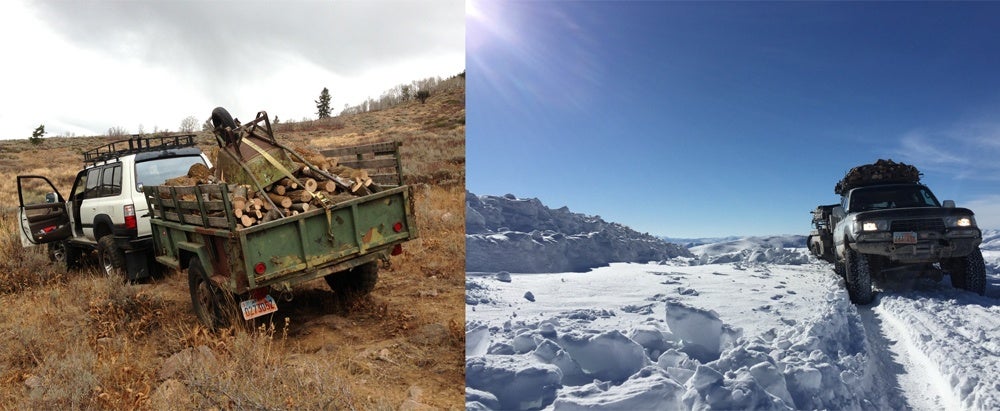
Coupled with the t-case Crawler Gears, the Land Cruiser now performs like a champ when the pavement is left in your rear view. With 37” KM3’s, the regeared 80 Series finally extracts all the potential that Toyota engineers built into this global 4×4 platform. The control and power of the 4.88s reduces the need for dangerous momentum on obstacles, allows careful tire placement, and improves descent control by reducing the need for braking. Paired with the 3.12:1 t-case gears, 1st gear in low range can now dish out both sloth and snort, as needed.
The performance boost from the gears is never more evident than when pulling a trailer off-road. Towing two tons of firewood and military trailer at 7000’ to reach a cabin high in the Rocky Mountains illustrates this perfectly. Climbing over football- to medicine-ball-sized rocks, the 10,000-pound truck/trailer combo feels totally controlled, lacking a need for extra throttle, and spot on for gear ratios.
The same has been true in hundreds of miles of pulling our little Dinoot, which tips the scales at 1,400 pounds when loaded. Over sand and snow and slick rock, the 4.88s have allowed better towing control, whether climbing out of washes or executing precise backing maneuvers among obstacles. Pulling the Dinoot up to 10,000’ on Nevada’s Wheeler Peak also reminded me how valuable proper gearing is at higher altitudes. In all these situations, the power just feels better.
Our Final Verdict
Was 4.88 the right ratio? For 35” tires it’s certainly right. For 37’s the set-up is also correct IF you anticipate gaining power output in the future, or if you don’t tow much. At some point, however, an owner has to ask if an engine swap or forced induction is the need. Until a Cummins R2.8 appears on my doorstep, the best answer is probably the bolt-on turbo kit from Wit’s End in Oregon. Thanks to Marlin Crawler, RANDYS and RCV, however, I can say that our Cruiser now has the optimum balance of gearing to carry it down any trail. It’s a remarkably capable, composed and reliable rig, and will be for decades to come.
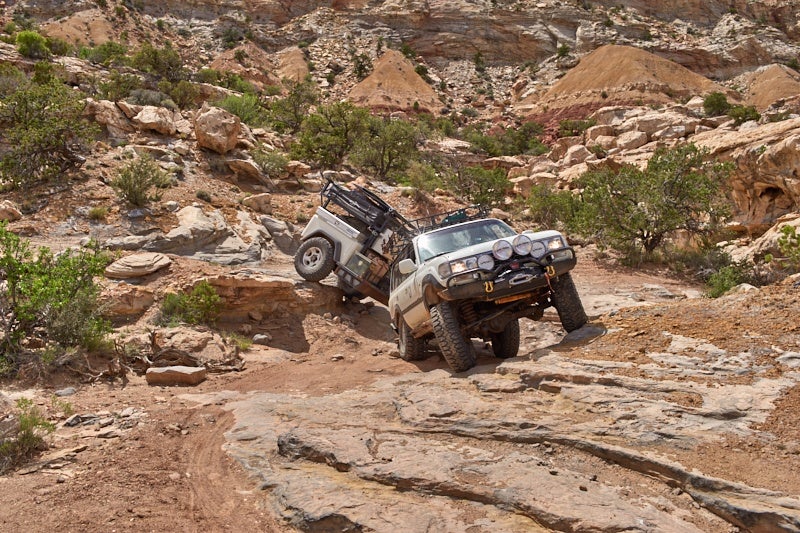
About the Gear Doctor: Dr. Sean Michael has been designing, abusing and testing outdoor gear since the 1980’s, and began reviewing products for Off-road.com in 2000. Today, he is Professor of Outdoor Product Design & Development at Utah State University, a product consultant, and a frequent Instructor at Overland Expo. Follow his trips and gear (ab)use @thegeardoctor on Instagram.





 Your Privacy Choices
Your Privacy Choices